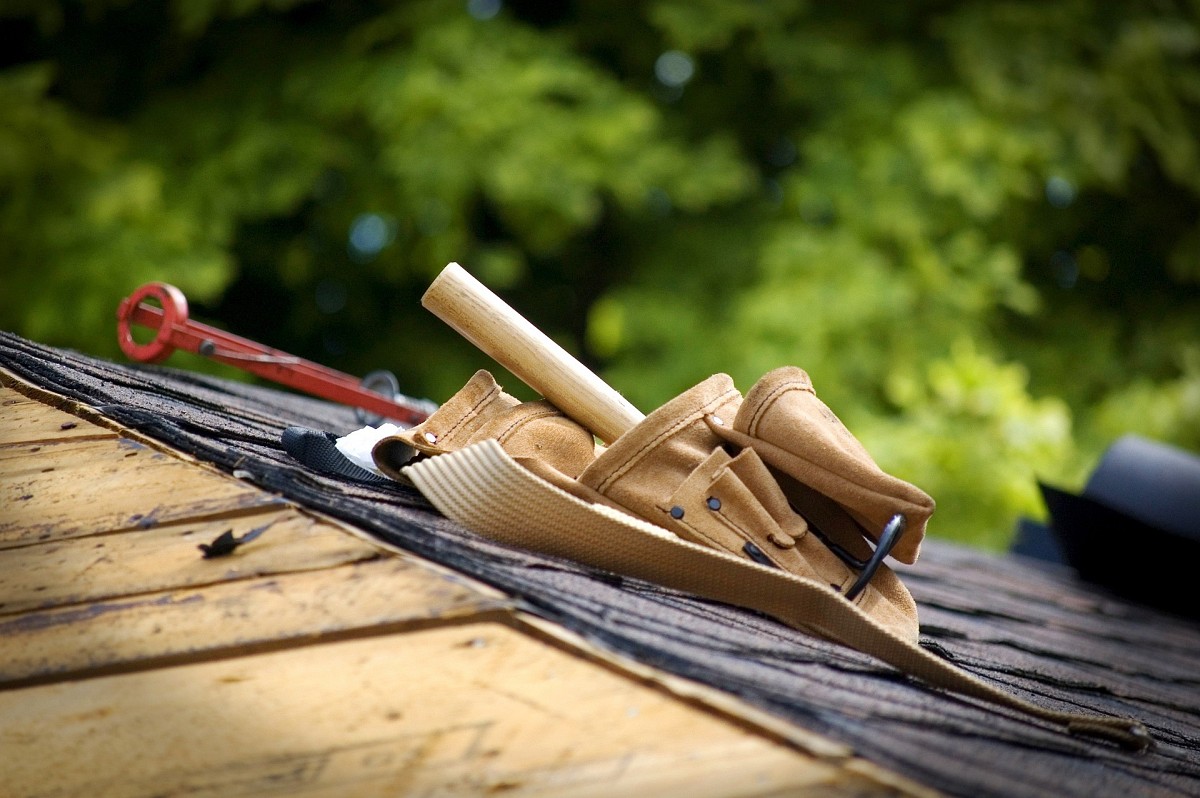Roof Replacement: The Right Way

Roof replacement is one of the most critical home improvements. A solid new roof is essential to protect your entire home from weather and water damage. When you need roof replacement, make sure to get the job done right. Hire a licensed roofing contractor who will not skimp on any of the following steps.
Remove Existing Roof Material Down to the Plywood
Remove all existing roof coverings, whether shingle, slate, or tile and rolled material, right down to the plywood or sheeted roof deck. Shingle manufacturers specify that if their shingles are installed over any of these roofing materials, the warranty will become null and void.
Remove Old Flashing
Remove existing flashing down to the roof deck sheathing. Damaged and rotten wood in these areas may need replacement, so that they won’t cause future structural problems.
Remove Roofing Tarpaper
Remove the roofing tarpaper so that your roofer can do a complete inspection of the existing deck surface, prior to installing the shingle and underlayment. Sheathing nails should also be inspected and sheathing refastened, if necessary, before roof replacement.
Replace Damaged Wood
Replace damaged or rotten wood. Otherwise, fastening to rotten or soft wood will cause the shingles to shift, causing your new roof to leak soon after it is installed.
Install Underlayment
Install underlayment over the sheathing before laying roof shingles. Tarpaper (15-30 lb.) or titanium, the most popular roofing underlayment materials, both work well but titanium provides a better reflector. Although it costs more, titanium roof underlayment usually comes with a warranty or guarantee if the roof replacement shingles fail for any reason.
Install Ice and Water Shield
Always install an ice and water shield at the gutter end lines of any roof. The area between the fascia board and the roof must be sealed with a gutter apron or a gutter-to-fascia seal cap for the ice and water shield to work.
Ensure Continuous Ventilation
An improperly ventilated roof system will shorten the life of your roof shingles. Ensure that your roof replacement includes continuous ventilation at the peak of the roof and the beginning rows of each shingle starter area.
Often houses don’t have a soffit area where airflow can ventilate into the attic space and then out of the roof peak ventilation area. If the roof design does not allow for ventilation at the peak and bottom, then install adequate single roof vents at locations calculated to allow needed airflow.
Use Under-Row Starter Shingles
Install under-row starter shingles at the first starter row of all shingled roof area. This prevents butted shingle bond being exposed to the underlayment material, which, unlike shingles, is not designed to resist water. “Unders” should always be offset from the new shingles being installed so that no tabs or bonds overlap.
Use Drip Edge Correctly
If the lower edge of a roof doesn’t extend beyond the fascia board by about 3/4 inch, runoff will drip behind, rather than inside, the gutters. This can lead to rotted roof sheathing and fascia, stained siding, and even soil erosion and a flooded basement. Drip edges extend the edge of the roof to slightly overlap the gutter. They are for gabled ends and work very nicely when existing aluminum fascia does not have a return bend on it.
However, drip edges should never be installed at a gutter end line area. Instead, use a gutter apron or hand-bent aluminum application in those areas.
Install Hip and Ridge Cap
Install a hip and ridge cap with your roof replacement. Caps create a finished-looking roof edge and prevent water from penetrating into the house.
Use Aluminum or Copper Flashing with Silicone Sealant
Use aluminum or copper flashing -- or a durable substitute material. Silicone-based caulking is the best way to seal flashings against brick, chimneys and other areas in need of sealant. Silicone dries out more slowly and lasts much longer than asphalt or rubber-based products.
Replace Pipe Boots
Replace the pipe boots around pipe stacks and other protrusions throughout the roof area. Entrance cables for electrical services are rarely changed because of the cost. A split boot can be installed if the existing boot on your entrance mast is defective.
Install Diverters
Install diverters behind chimneys and at stop wall areas on the roof into which water drains directly. Commonly called “crickets,” diverters will keep water flowing off your roof.
Choose Quality Shingles
Choose high quality shingles to extend the lifespan of your roof replacement. Using a dimensional shingle is highly recommended for both beauty and durability.
Gutter Guards
If you decide to install gutter guards, select a quality product that will not sag or fall out after the first season. Diamond aluminum grates are the best, because they allow constant drainage even in heavy rains and still keep debris out of the gutters.
Looking for a Pro? Call us (866) 441-6648

Roofing Average Costs
Roofers Experiences

This Amazing Contractor Saved Me Hundreds On Roof Replacement

Roof Repair Will Help My Aging Roof Last A Few More Years



